Cucumbers, with their winning sweetness and crunchiness combo, are a great addition to any vegetable garden. One of the first things you’ll need to know when you’re planting these summertime veggies is how deep exactly to plant your cucumber seeds or seedlings, and that’s what we’ll be discussing here.
Cucumbers can be started in the garden by planting 3-5 seeds one inch deep at about 12-inch intervals. Cucumbers started indoors can be transferred after about 3-4 weeks. Exact heights of seedlings will vary, but they should generally be planted up to their first set of leaves.
Whether you’re looking to add some extra crunch to your salad, craving some DIY pickles, or wanting to de-stress with a super refreshing green face mask, cucumbers are the way to go. And it all starts with the seeds. Let’s dig in!
Cucumber Seeds Planting Depth
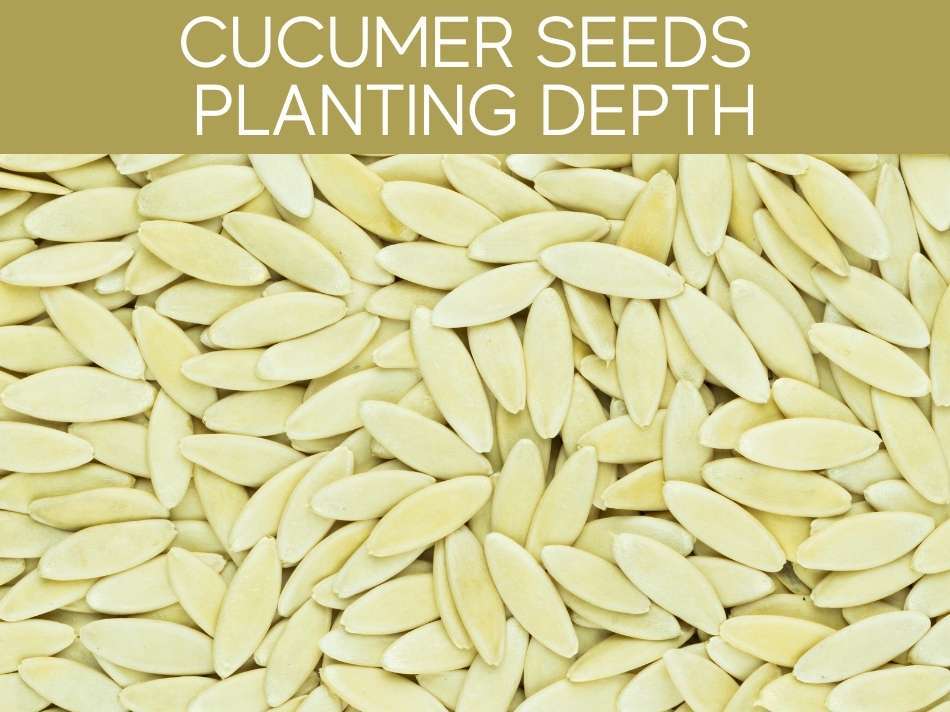
Cucumbers can be started indoors or outdoors. We’ll begin with the outdoors, directly-into-the-garden scenario.
Cucumber seeds should be planted in a garden once the soil is at least 70°F. Plant seeds one inch to one and a half inches deep and cover with soil. There should be at least 12 inches of space between groups of seeds using the row system.
Planting directly into the garden can save you a lot of hassle if the weather in your area allows for it.
While you only need about an inch depth when first planting the seeds, the roots can extend an amazing 36 to 48 inches.
To account for this, don’t plan on planting near other large root systems like trees. You’ll want your very own cucumber patch.
Also, it’d be best if you removed larger rocks down to at least an 8-inch depth before planting the seeds.
You don’t need to purge it completely. Just try to remove the stuff that will get in the way of the root system.
2 methods for planting cucumbers: Rows vs. Hills
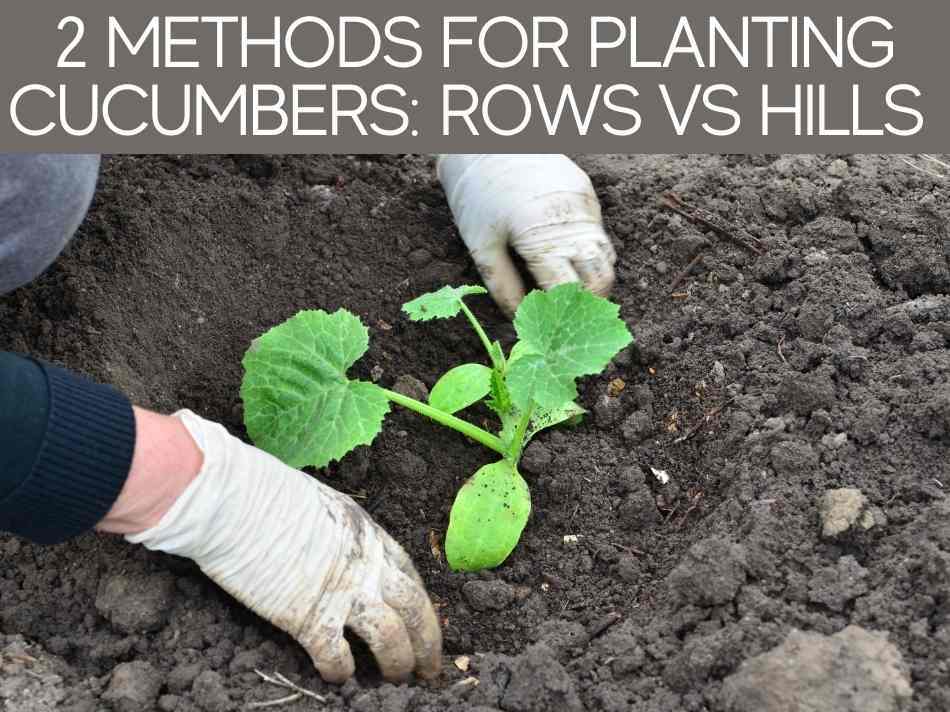
Generally, there are 2 methods for planting cucumbers in the garden: rows and hills.
The row layout is pretty typical and self-explanatory. You can plant about 3-5 seeds at a time to increase the likelihood of sprouting, and cut down on the growth later, if needed.
Plant each group of seeds about 12 inches apart. Some varieties don’t mind closer spacing, but this is a safe distance. Rows should be about 5-6 feet apart (note the units!).
As for hills, you should build those up to be 4-6 inches tall, and you can add a few more seeds at the start – generally, 4-6 – at a depth of one inch. Space the hills 5-6 feet apart, just like with the rows.
You might want to check out our complete article on how far apart to plant cucumbers and tomatoes.
How Deep to Plant Cucumbers in Pots?
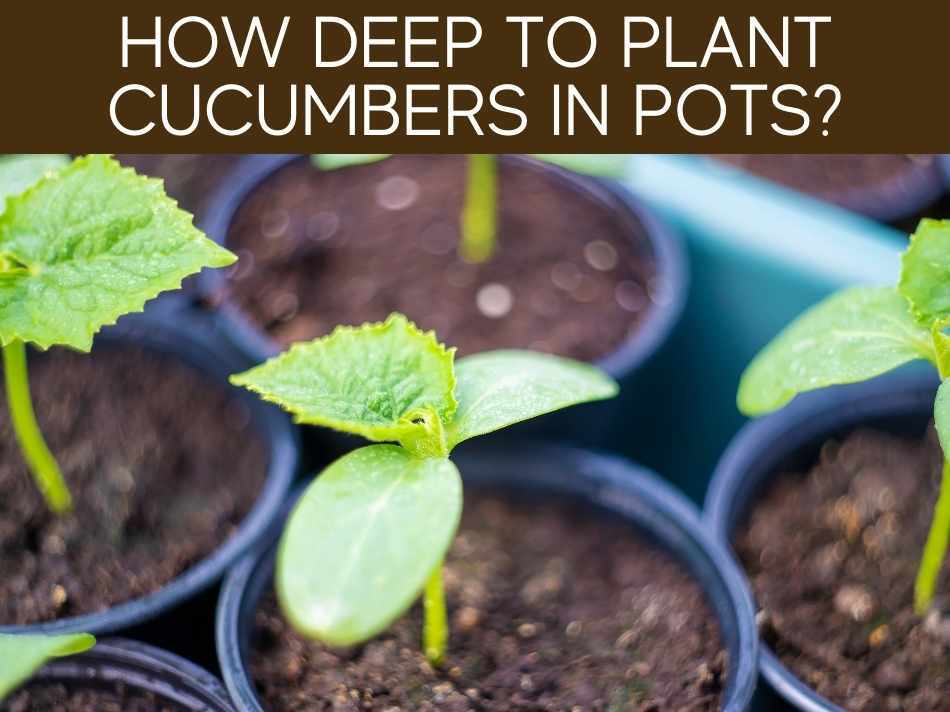
Of course, if you’re living in a place that doesn’t start getting warm until fairly late in the year, and you’re wanting your cukes earlier than planting outside would allow, I can’t fault you for opting not to wait.
You can get a jumpstart despite cold weather by starting your seeds inside using pots.
Cucumber seeds should be started indoors no more than 4 weeks before the last frost. Plant 3-5 seeds about one inch deep in seed starter mix. Use a large container that holds at least 5 gallons of soil per plant if they won’t be transferred, and individual biodegradable pots if they will be.
Cucumbers can be grown entirely in containers, if you so choose.
The benefit of this is that, like with planting directly into the garden, you won’t be disrupting the root system very much, which cucumbers don’t like.
If you’re taking this route, you’ll need a container large enough to accommodate those long, extending roots.
And be sure that you don’t plant any too close to another.
See the 6 stages if the life cycle of cucumbers, & why they’re important.
Starting cucumbers in containers
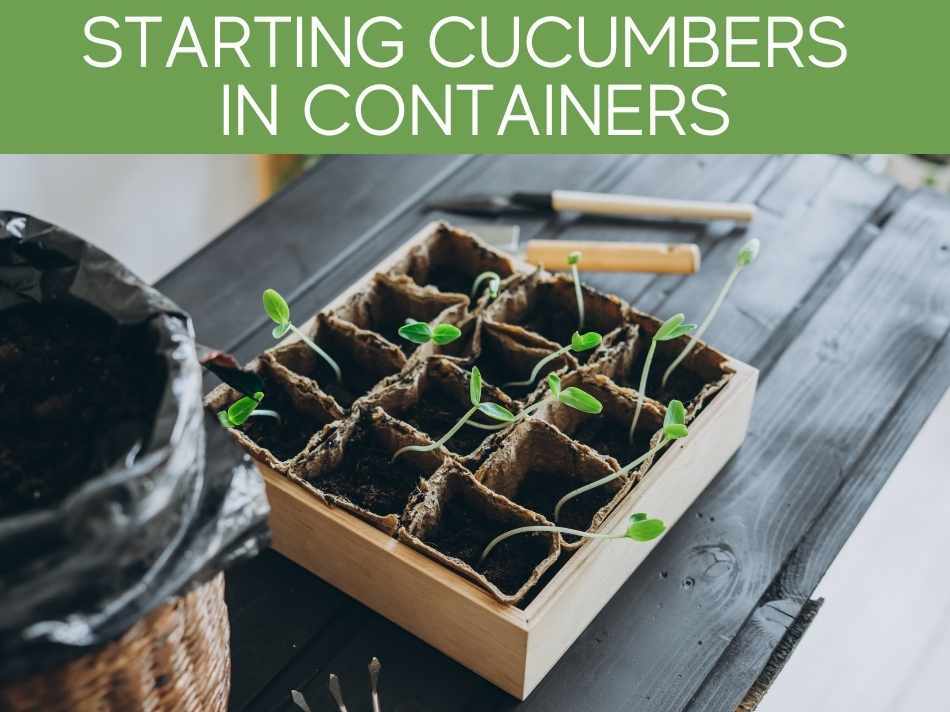
It’s good to plant more than one seed in each interval to increase the odds of germination.
But if more than one starts to grow over a few inches tall per grouping, you’ll need to cut it down to just one.
If you’re only planning to start your cucumber indoors, and transfer seedlings to the garden once it’s safe for the little guys.
A great option is to use individual, biodegradable pots, like peat pots.
These don’t need to be as big as the containers, since the plants won’t be growing in them for very long.
The reason these are great is that it keeps you from having to dig up the roots. Which, again, could cause root shock.
When it’s time to make the transfer, you can plant the entirety of the (biodegradable) pot. And make sure that the top of the pot is level with the top of the soil line, and the rest will be taken care of for you.
If you’re running into problems, check out the complete article on why little (or mini) cucumbers are dying.
How Deep to Plant Cucumber Seedlings?
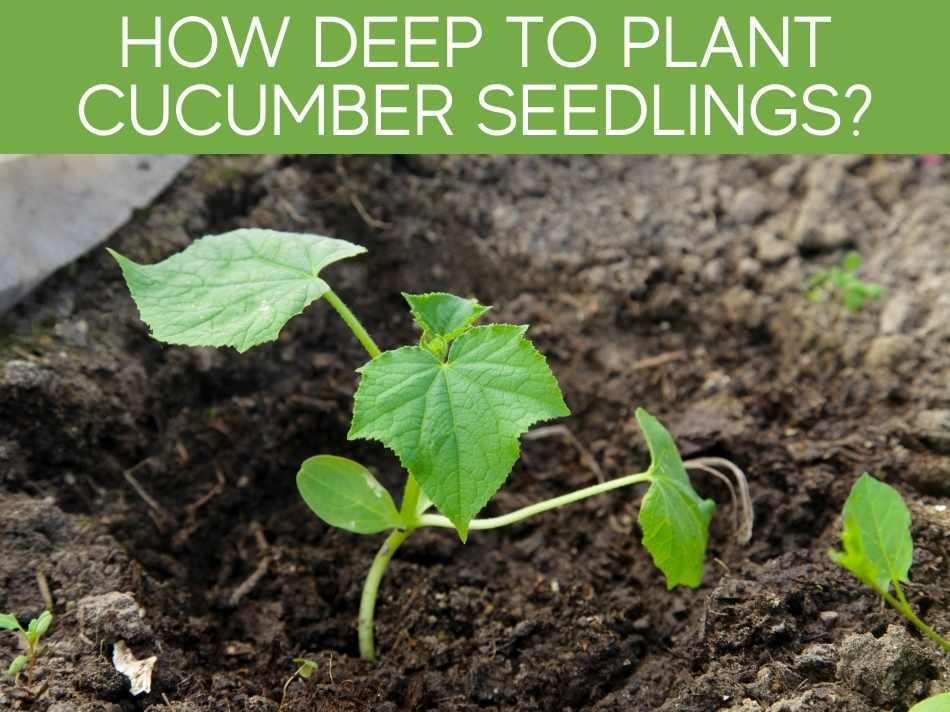
You’ve got a head start on the season by planting your cucumber seeds inside.
You’ve proudly witnessed them sprout little green stems from the pots. And after a bit more time spent growing, things are starting to get crowded.
Now what?
Time to transfer the seedlings!
Cucumber seedlings should be transferred after 3-4 weeks. If grown in biodegradable pots, dig a hole in the garden deep enough to hold the entirety of the pot, at/below ground level. If a non-biodegradable container was used, dig a small hole and plant the seedlings up to their first set of leaves.
Because seedlings are small and cucumbers are already susceptible to root shock, make sure you’re super careful when making the transfer.
Again, be sure that the threat of a frost is well and truly gone before transferring to a garden.
And don’t feel like you have to do it all at once. Harden off the seedlings to brace them for the change in weather.
Be gentle if you have to remove the seedlings from a container. Lift from beneath the root system, and place directly into the hole in the garden – don’t try to force them down.
If needed, add a bit more soil around the edges of the seedlings and pat down. That way, each one is covered to slightly below their first set of true leaves (there should be 2-4 true leaves by now).
As before, the spacing between each plant should be at least 12 inches.
How Deep Do You Plant Cucumber Transplants?
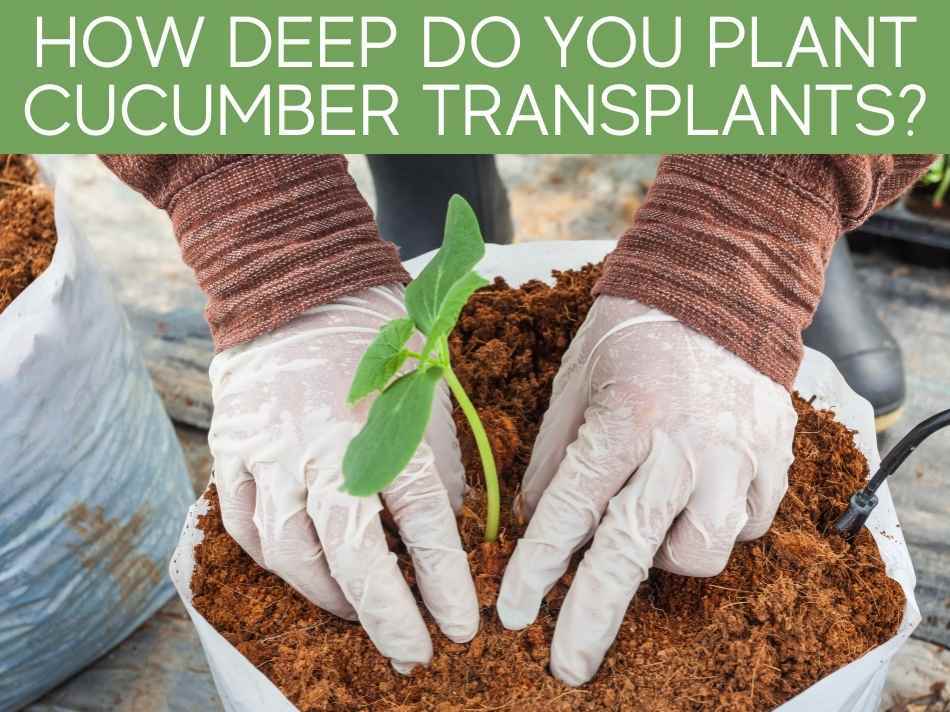
Cucumber seedlings are very small and fragile, typically containing only the cotyledons and first true leaves, a cucumber transplant is a bit bigger and hardier. But the root systems are also slightly bigger.
To plant a cucumber transplant, dig a hole slightly deeper and wider than the container holding the transplant. Place the transplant into the hole and cover with enough soil to reach up to the first set of leaves, or as low as it had been planted in the container.
Transplant sizes can vary pretty significantly, but that’s okay.
When you’re making the transfer, hold two fingers on either side of the stem at the soil line to provide support. Then flip the container upside down, then place directly into the already-dug-up hole.
If your cucumber transplant is taking up a lot of space above the soil line of its container, it’s likely taking up all the available space below the soil line as well.
Start by making the hole slightly bigger than the original container – more soil can always be added later.
The transplants should be buried at least as deep as they had been in the previous container.
Can I Transplant Cucumbers Deeper?
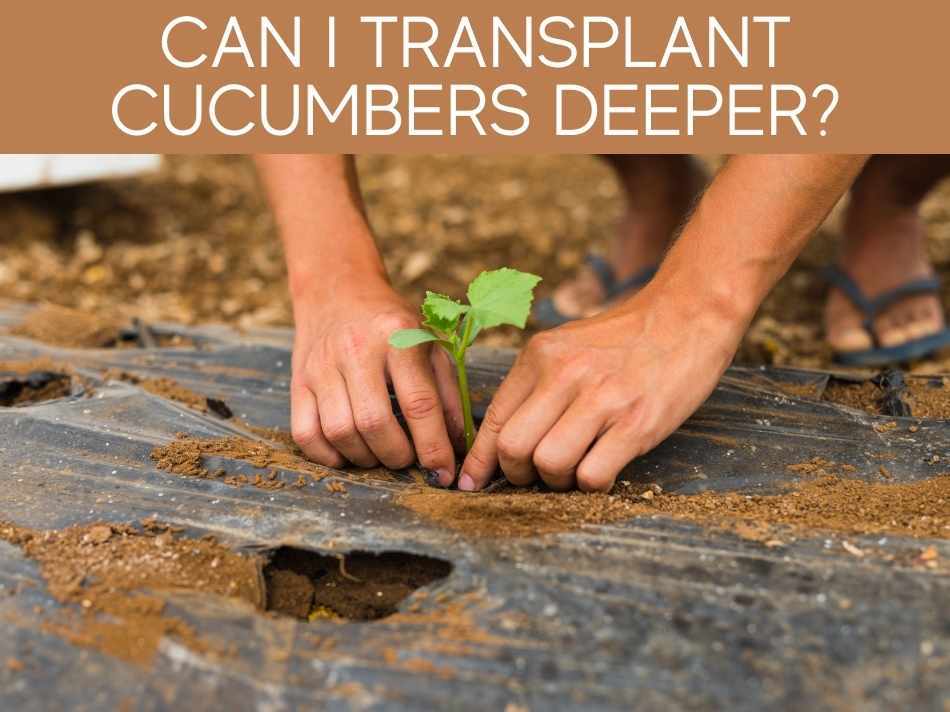
Generally, you should cover transplants with enough soil to plant it as deep as it had been in the previous container. Assuming that it was doing well in it.
However, the exact depth that you bury your cucumber transplants at can vary, if you need it to.
Cucumber transplants can be buried deep enough to cover up to their first set of leaves. For strong transplants, the lower set of leaves can be pruned if desired, in order to allow for a deeper transplant.
If your cucumber transplant seems a little top heavy, cut the lower leaves and bury the plant a bit deeper than usual. This might help with the support.
Burying slightly deeper than usual might also be helpful if the transplant is simply seeming weak.
But you should certainly try to make it stronger before giving the transplant the additional strain of being in a new environment.
Before transplanting a weak/wilting cucumber plant, make sure that it’s getting sufficient water and sunlight.
If it’s still looking a little slouched when you make the transplant, provide some additional support. You can use garden pegs, a trellis, or some twine.
Can I Plant Leggy Cucumber Seedlings Deeper?
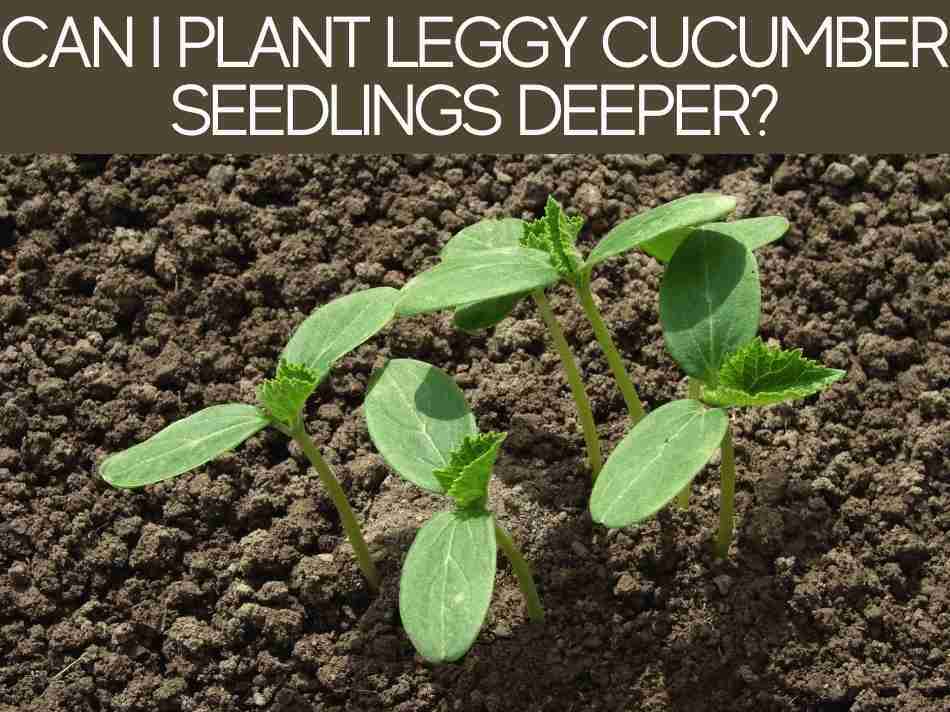
There’s the million-dollar question!
It’s a little easier to prevent leggy seedlings than to fix them, but don’t despair.
Generally, leggy cucumber seedlings can be planted deeper to support the longer stems, but efforts should first be made to strengthen the seedlings. Provide at least 14 hours of bright light each day, maintain a temperature around 70°F, and add liquid fertilizer to the lower tray of the seedlings.
You might notice that some of your cucumber seedlings have long, skinny stems. Perhaps long enough that they have started to lean or wilt – or may be slightly yellowish.
Don’t panic. There’s hope yet.
For leggy plants, the answer to how deep to plant cucumber seedlings isn’t much different than for non-leggy seedlings.
To prevent leggy seedlings from the start, the most important step is to make sure that they get adequate light. Right from the point of germination.
This issue is fairly common for seedlings that have been started indoors.
Once you notice your seedlings start to become leggy, add more light. You can do this by moving the container or by adding grow lights.
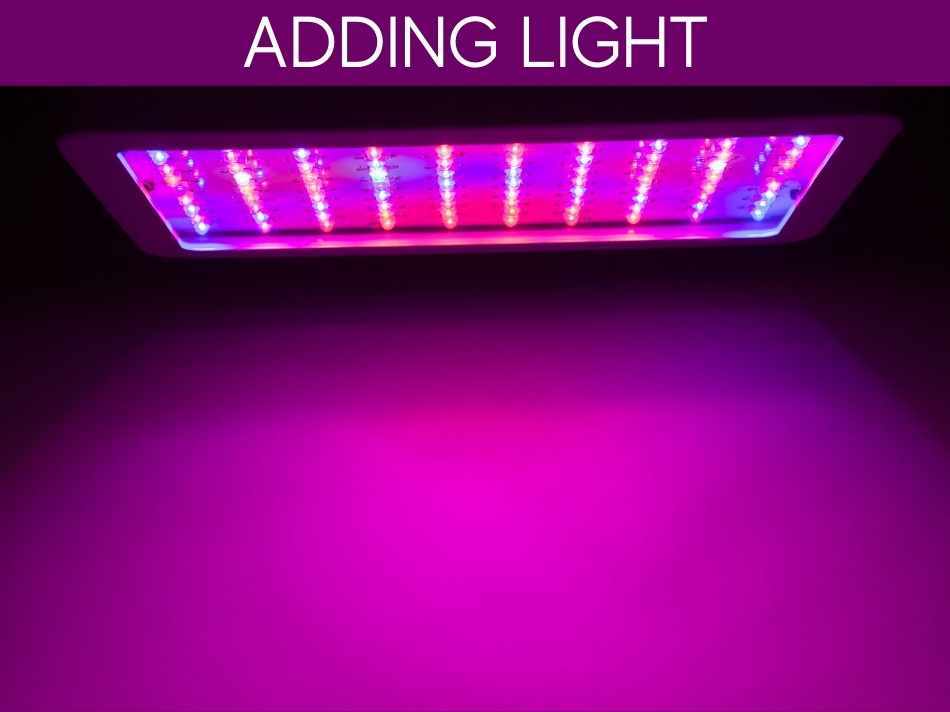
Also, be careful when watering them, as they are particularly vulnerable to breaking or bending; place just enough water for the roots to reach in the lower tray, if possible.
Once the weather is accommodating and the seedlings seem to be making progress, you can start the process of slowly acclimating them to the new, outside conditions.
And yes, once they have started to become a bit stronger, it’s okay to transplant them a little deeper.
Just don’t go for the deeper transplant right away, when they’re still very vulnerable.
How Deep Should I Plant Cucumber Seeds?
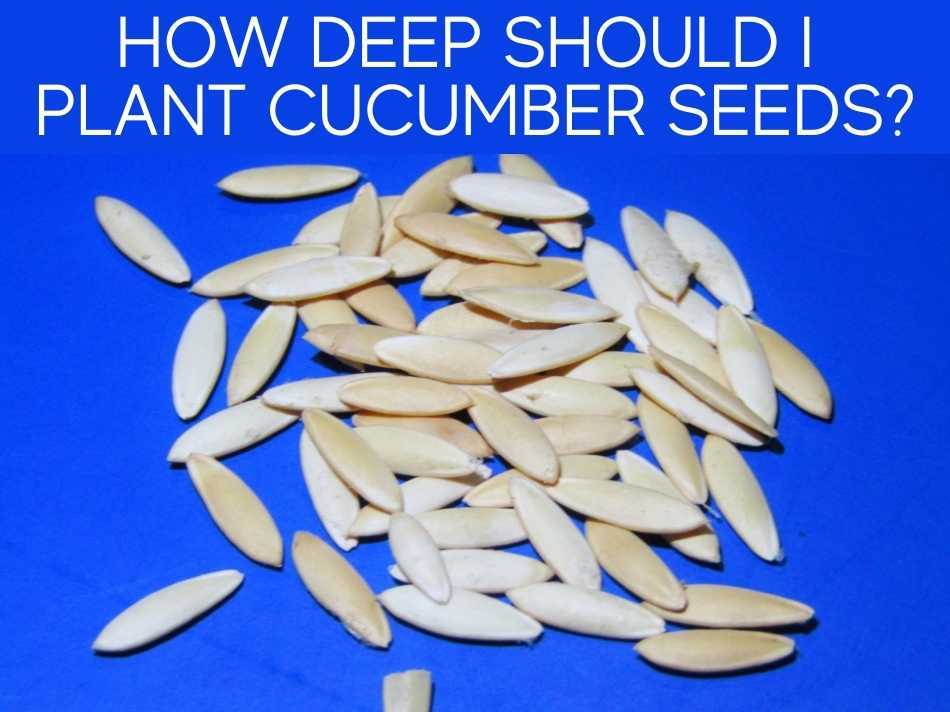
Cucumber plants are a great addition to any garden in the summer. They sprout quickly, they’re easy to maintain, and they can be used in a huge variety of ways after harvest.
Of course, cucumbers have their own lighting, water, temperature, and fertilizer requirements.
But perhaps the most cucumber-specific factor to remember is the spacing they require. The depth, width/height, and the required space between other plants.
Cucumber seeds should be planted one inch deep, 3-5 at a time. There should be at least 12 inches of space between each group of seeds in a garden. If started indoors to be transplanted as seedlings, start seeds in individual biodegradable pots and plant the entire pot when transferring.
If you end up with multiple seeds sprouting per group, trim back after they reach 3-4 inches tall. You only want one plant in these spacing intervals.
Wondering “How Deep to Plant Cucumber Seedlings?” The answer is generally as deep as their first set of true leaves (not the cotyledons).
And while different varieties of cucumbers have different spacing needs, these intervals will be a safe bet.
No matter which method you’re choosing to start your cucumber seeds, the depth will always start at about one inch; make sure that they’ll get plenty of light to help with germination and prevent leggy seedlings.
Lastly, don’t forget that even though only about one inch is required to start, the root systems will grow downward substantially!
And, for vining varieties, pretty far outward too – unless you train them on trellises. Happy planting!
Also, you’ll want to read our article on how long it takes for a cucumber to grow (you might be surprised).
